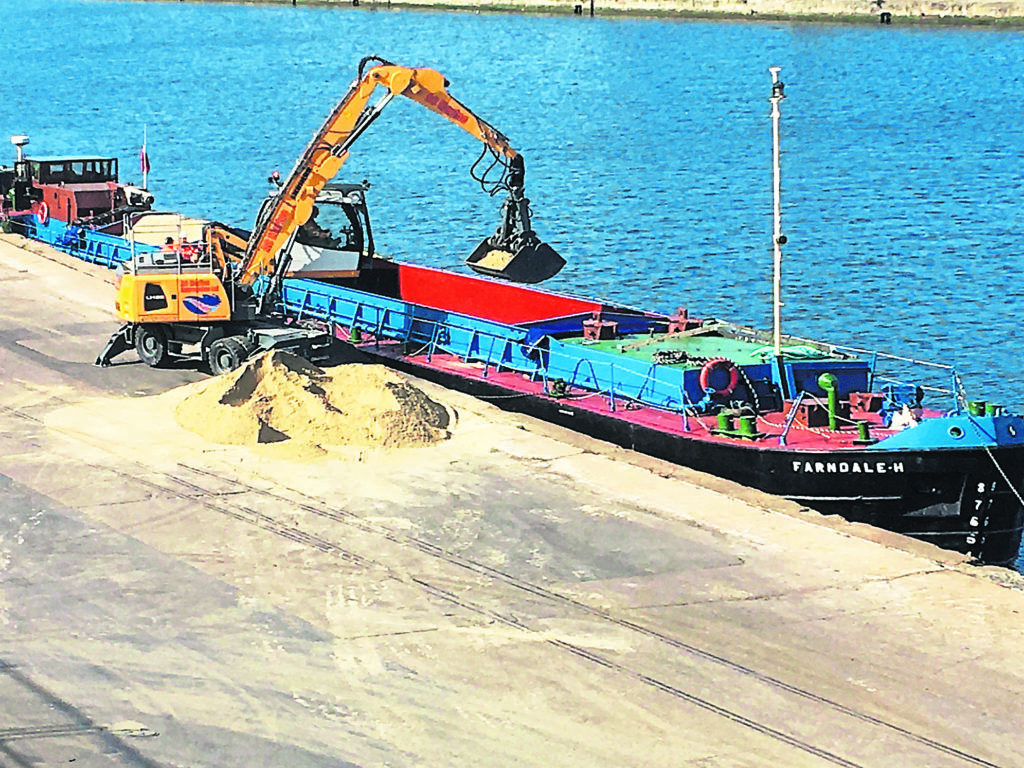Jonathan Mosse continues his monthly look at freight developments on the inland waterways.
AS WRITER and researcher for the Nicholson Waterway Guides, bumping along what passes for a towpath on the lower Trent astride a bicycle, checking for changes to the navigation, could easily be numbered at the bottom end of the job’s attractions.

By contrast, a loaded gravel barge motoring serenely downstream on the adjacent navigation represented the epitome of unfettered progress and an altogether much easier and effortless means of transport from A to B.
Hardly surprising, then, that at the next encounter with a lock keeper, at Castleford as it happened, way up the Aire & Calder Navigation, I asked for the contact details of a likely barge operator.

And so I made the acquaintance of John Branford, the sixth-generation representative of Branford Barge Owners who has been boating from the age of 15 and a skipper since 18. That meeting was some 25 years ago and I have benefited immensely from his knowledge, wisdom and experience ever since, as have significant sections of the Nicholson guides covering the commercial waterways of the North East.
In the 60 years that have elapsed since his first command, John has carried more than four million tons of freight (largely aggregates) in a variety of craft, with ever-increasing capacities. The norm was around 350 tons when I forsook towpath and bicycle for a warm wheelbox and hours of John’s fascinating ‘mid-river’ philosophy as we steadily traversed Trent, Ouse and the vagaries of the Aire & Calder Navigation.

Today, Canal & River Trust (CRT) permitting, he could carry around 520 tons in any of the three ‘black oilers’ that he has converted to bulk aggregate carrying through the simple expedient of cutting the tops off the oil tanks and raising the coamings. Well, not all the tanks, as a couple are retained to be flooded with ballast water for the return journey, unloaded down the canal, in order to duck under the low bridges.
Over the years, where a final destination has not been waterside, John has also operated lorries, while throughout the decades he has worked with a wide variety of quarrying operations, his knowledge and understanding of barges and waterways being in steady demand in the design of loading and unloading facilities.

Now, well past the age of retirement, he is still hanging in there, optimistic that he will – despite the frustrations constantly generated by CRT around the viability of commercial carrying by water in the North East – still have a business to pass on to a seventh-generation member of the Branford family: his son and North Sea wind farm supply skipper, Jonathan.
So I’ll let John have the last word: “There are six barges waiting to start transporting aggregate from Hull to Leeds. Some of the opportunities available are large jobs which are ready to start and would ease road congestion and help the environment.

“Unfortunately I am unable to work on any of these jobs as I refuse to run while CRT has the cheek to increase the tolls by 100% while restricting us to a 40-hour, five-day working week and a 20% loss of the cargo we are able to carry (due to a partially dredged navigation). The increase in tolls runs the risk of making transport by water unviable when fuel costs have also increased substantially.
“Given that CRT claims to want millions of pounds to build an inland port at Stourton in Leeds to ease road congestion, it should prioritise sorting the canal first to build confidence in the waterways and to also enable current hauliers to train and recruit new staff to enable future generations to be able to carry on water transport.”
#freight #canalandrivertrust #towpathtalk #canals #canalsandrivers #narrowboat #rivers #waterways #lifeonthecut #boating #boats



